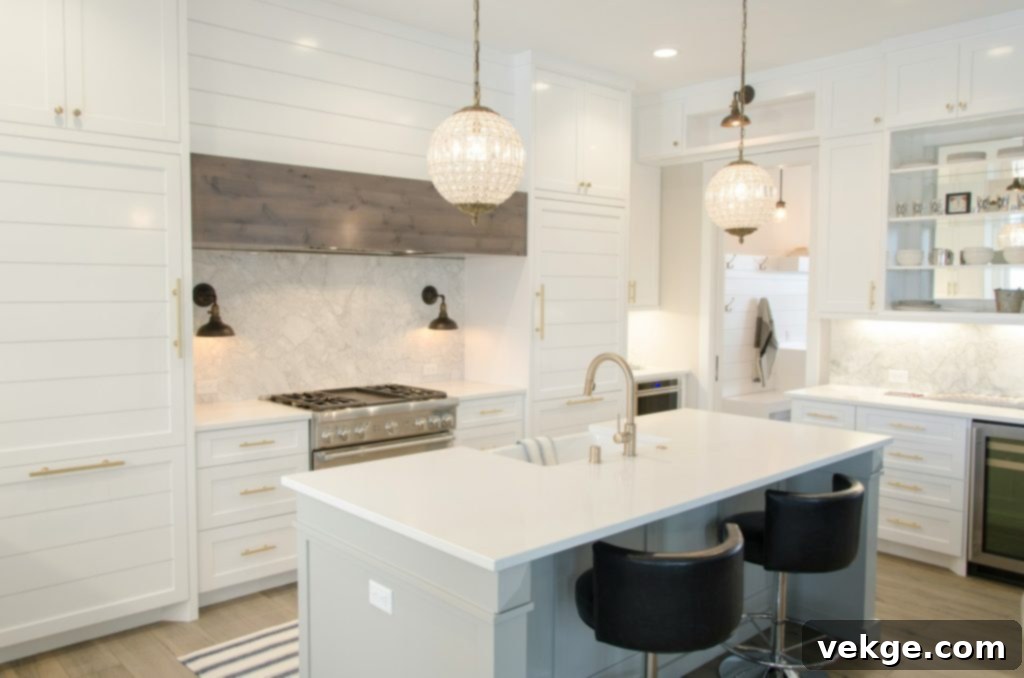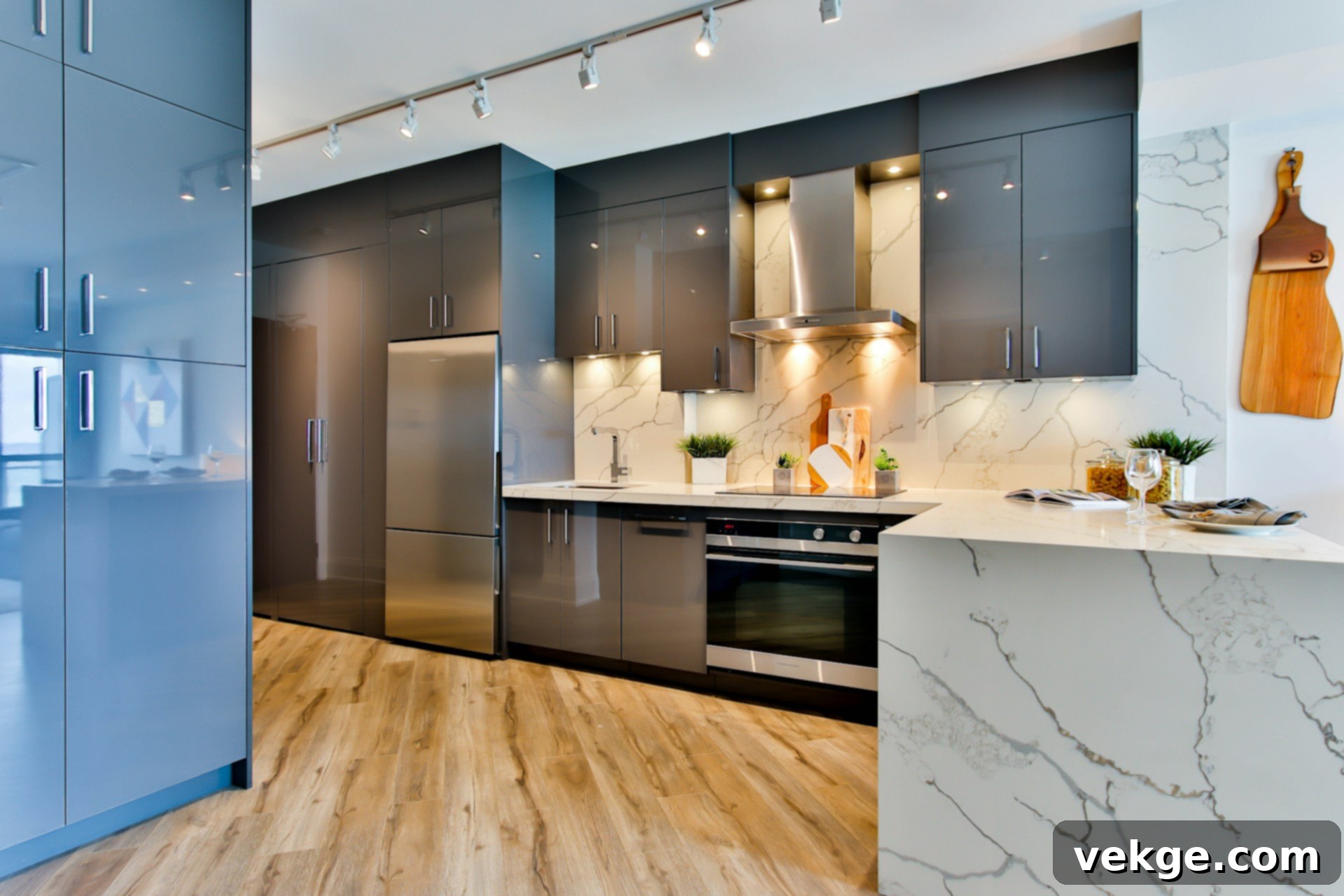Designing Your Dream Kitchen: Essential Details for a Functional & Beautiful Space
Embarking on a kitchen renovation or designing a new one is an incredibly exciting journey. The initial stages are often filled with inspiration boards, endless paint swatches, gleaming worktop samples, and vivid dreams of that first gourmet meal prepared in your brand-new culinary haven. It’s easy, and perfectly natural, to get completely absorbed by the significant, visually impactful choices: the bold colour scheme, the elegant style of the cabinet doors, or the sleek design of the taps. These aesthetic elements are undeniably crucial to the overall look and feel, shaping the initial impression of your space.
However, once the dust settles, the installers pack up their tools, and you begin to truly live and work in your new kitchen, you start to realise that the things which genuinely make you smile, those daily moments of effortless satisfaction, aren’t always the big-ticket, show-stopping items. More often than not, it’s the smaller, incredibly clever, and sometimes almost unnoticeable details that make the most profound difference to your everyday life. These are the thoughtful elements that prevent minor daily frustrations from escalating, transforming your kitchen from merely pretty to profoundly practical. Get these hidden, foundational details right, and you’ll create a space that doesn’t just look good, but truly works—feeling intuitive, easy, and perfectly tailored to your needs.
Illuminate Your Culinary Canvas: The Art of Smart Kitchen Lighting
Imagine this: you’ve invested a substantial amount in a gorgeous new kitchen, your countertops are sparkling, and everything looks pristine. But come six o’clock, you find yourself chopping vegetables or kneading dough in your own shadow, struggling to see clearly. This indicates a fundamental flaw in your lighting design. Relying solely on a single, central ceiling light is a common mistake and simply doesn’t provide adequate illumination for a dynamic workspace like the kitchen. Good kitchen lighting isn’t about having more lights; it’s about layering different types of light, and it’s far less complicated than it sounds. It’s simply about having the right kind of light for the right job at the right time.
Your ultimate ally in the kitchen is **task lighting**. This is the bright, focused illumination you need for critical activities such as chopping, stirring, reading recipes, and cleaning. LED strip lights, discreetly tucked away under your wall cabinets, are an absolute game-changer. They cast an even, shadow-free glow across your entire work surface, enhancing visibility and safety without any harsh glare. Consider also miniature spotlights integrated into shelving or sleek pendant lights hanging over an island or breakfast bar, providing focused light where you prepare food. Beyond task lighting, you need **ambient light** to create a welcoming atmosphere when the intense work is done. This can come from recessed spotlights, but don’t stop there. Adding a stylish table lamp in a corner, integrating dimmable ceiling lights, or even a soft, moody glow from within a glass display cabinet can transform the room, making it feel warm, inviting, and perfect for entertaining or relaxing after a meal. Finally, don’t forget **accent lighting**, which highlights architectural features or decorative elements, adding depth and visual interest to your kitchen’s overall appeal. Thoughtful layering of these light types ensures your kitchen is both functional and beautifully atmospheric at any time of day.
Winning the War on Clutter: Intelligent Storage Solutions
The battle for effective kitchen storage is a perennial challenge for almost every homeowner. However, the immediate answer isn’t always just “more cupboards.” In fact, simply lining every available wall with standard cabinets can make a room feel smaller, more enclosed, and even a bit claustrophobic, especially in compact kitchens. The true goal is not just quantity, but rather smarter, more thoughtful storage solutions that genuinely simplify your life. We’re talking about putting an end to frustrating cupboard ‘Jenga’ games, where items tumble out, and eliminating the need to hunt on your hands and knees for that specific pot or pan buried at the back of a deep, dark corner.
This is precisely where clever, purpose-built storage fittings truly come into their own, proving their worth ten times over through daily convenience. A full-height pull-out larder, for instance, is nothing short of a revelation. Instead of a deep, obscure cabinet where tins and packets go to be forgotten and expire, you can smoothly slide the entire unit out, revealing every item at a single glance. This not only maximizes space but also drastically reduces food waste and simplifies meal planning. Similarly, swapping out standard base cupboards, which often become cluttered voids, for deep, wide pan drawers is a decision you will unequivocally never regret. Imagine effortlessly reaching in and grabbing even your largest stockpot or heaviest casserole dish without a single clatter or struggle. These aren’t flashy features, but they are the quiet heroes of kitchen design, bringing a profound sense of satisfaction and efficiency to the daily grind of cooking and cleaning. Other innovative solutions include corner carousel units (like ‘Magic Corners’ or ‘Le Mans’ pull-outs) that bring contents out to you, dedicated spice racks, integrated waste bins, and custom cutlery inserts, all designed to maximize every inch of space and keep your kitchen impeccably organized.

The Unseen Foundation: Carefully Choose Your Units
It’s incredibly tempting, when faced with budget constraints, to save a few pounds or euros on the fundamental structures of your kitchen—the cabinet carcasses. This, however, is a classic example of a false economy that can lead to significant regrets down the line. The quality of these underlying ‘bones’ is paramount; they are the unseen foundation that dictates how long your kitchen will last, how well it will withstand daily wear and tear, and how robust it will feel over time. A cheaper carcass might look acceptable initially, but its longevity and resistance to humidity and damage will be compromised.
True quality often comes down to details you might not immediately notice or appreciate during a showroom visit. Look for robust construction materials like thick, high-density MFC (Melamine Faced Chipboard) or even plywood, rather than thinner, less durable alternatives. Solid back panels, for example, provide crucial structural integrity and prevent moisture ingress, which can wreak havoc on the unit from the inside out. Durable PVC or ABS edging, securely applied, is another key indicator of quality, protecting exposed edges from chips, impacts, and damp. High-quality hinges and drawer runners, often equipped with soft-close mechanisms and full extension capabilities, ensure smooth operation for years to come without sagging or breaking. Spotting the difference between a well-made unit and a budget option can be tricky for the untrained eye, but this is precisely where seeking expert advice pays off immensely. Professionals, such as Andy from OKHome Kitchens in Malta, possess the knowledge to guide you through the intricacies of kitchen unit construction. They can help you in your search for a quality kitchen, offering a wide range of high-quality options built to last, ensuring your investment stands the test of time and continues to perform flawlessly for decades.
Powering Your Culinary Hub: Plan for Electrical Outlets
Ah, the dreaded daily plug socket shuffle. We’ve all been there: unplugging the toaster to use the blender, then unplugging the blender to charge a phone, all while attempting to navigate a frustrating tangle of wires. In our modern kitchens, which are increasingly filled with an array of air fryers, high-tech coffee machines, stand mixers, smart speakers, and countless other gadgets, planning your electrical sockets properly is far from a boring afterthought; it is an absolutely essential and integral part of the overall kitchen design. Skimping on outlets leads to daily frustrations and can even pose safety risks.
Before you finalise any design plans, take a deliberate walk around your current kitchen. Mentally (or physically) count all the appliances and devices you regularly plug in, noting their typical locations. Then, for good measure, add at least a few more sockets to that tally, anticipating future needs or the simultaneous use of multiple appliances during cooking. Consider not only the quantity but also the strategic placement. Sockets should be conveniently located above worktops where you’ll be using small appliances. Think about dedicated appliance zones: perhaps a cluster of sockets within a pantry or a breakfast station for the toaster and kettle, keeping the main worktops clear. If you’re incorporating a kitchen island, a pop-up or flush-mount socket that disappears seamlessly into the worktop surface is a truly nifty trick for maintaining a clean, uncluttered aesthetic while providing power precisely where it’s needed for laptops, charging phones, or entertaining. Don’t forget sockets for integrated appliances (like dishwashers or ovens), under-cabinet lighting, and perhaps even a USB charging point or two. Thoughtful power planning ensures your kitchen remains both highly functional and beautifully streamlined.
The Unsung Hero: That Un-Glamorous Essential – Your Extractor Fan
Let’s shift our focus to perhaps the least glamorous, yet arguably one of the most essential pieces of kit in your new kitchen: your extractor fan. No one typically gets excited about kitchen ventilation or extractor hoods, but when it’s working effectively, you will be incredibly grateful for its silent, diligent service. A decent, well-specified extractor hood is your primary line of defence against a host of kitchen-related nuisances: lingering cooking smells (especially after frying or strong spices), clouds of steam that condense on surfaces, and the pervasive, fine layer of greasy grime that can quickly settle on your lovely new cabinets, walls, and even soft furnishings. Without adequate ventilation, your beautiful kitchen will quickly start to show signs of wear and tear, and your air quality will suffer.
In an open-plan home, a powerful and efficient extractor fan becomes not just beneficial, but truly non-negotiable. It’s the critical barrier that prevents the aroma of last night’s pan-fried salmon or fish and chips from permeating your entire living space, ensuring that your sofa doesn’t smell like dinner. When choosing an extractor, consider its extraction rate (measured in cubic metres per hour, m³/hr) relative to the size of your kitchen. For optimal performance, it should be able to exchange the air in your kitchen at least 10-12 times per hour. You’ll also need to decide between ducted systems, which vent odours and steam outside, and recirculating models, which filter the air and return it to the room. While ducted systems are generally more effective, modern recirculating units with high-quality charcoal filters have improved significantly. Also, pay attention to noise levels, often measured in decibels (dB), as a loud extractor can detract from the kitchen experience. Regular cleaning of grease filters is crucial for maintaining efficiency and longevity. Investing in a good extractor fan is an investment in the comfort, cleanliness, and long-term enjoyment of your entire home, ensuring a fresh and pleasant environment.
The Heart of the Home: Beyond the Surface
When all is said and done, a kitchen has to be more than just a pretty face. While aesthetic appeal is vital, its true value lies in its functionality as the bustling engine room of your home—a place for cooking, gathering, entertaining, and daily living. By thoughtfully “sweating the small stuff” and diligently thinking hard about how you will genuinely use the space on a day-to-day basis, you transcend mere decoration. You actively participate in creating something that is not only beautiful to behold but also a real joy to live with, every single day.
It’s these deliberate, thoughtful, and often hidden details—the perfectly placed socket, the effortlessly gliding drawer, the targeted task light, the quiet efficiency of the extractor fan—that collectively make a room feel like it was truly made for you. They transform a generic space into a personalised sanctuary where functionality meets form in perfect harmony, making your new kitchen an enduring source of comfort, efficiency, and quiet satisfaction.
